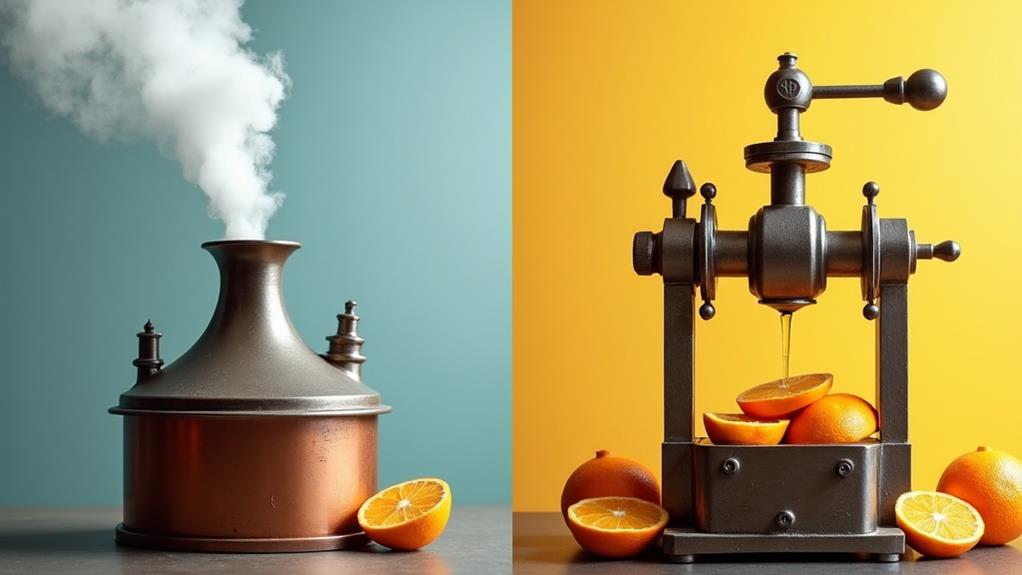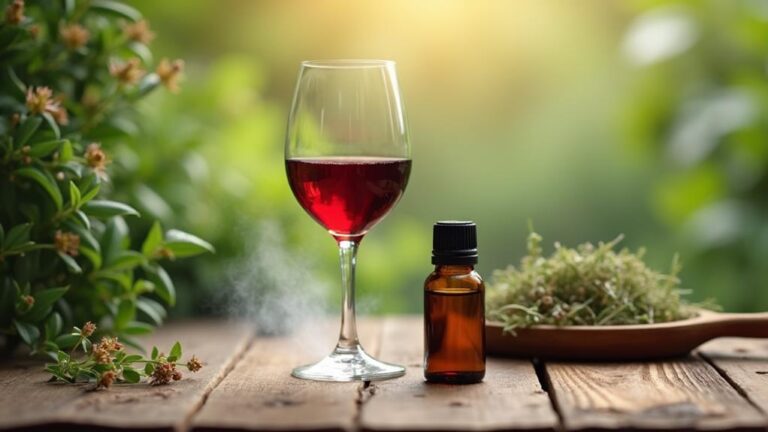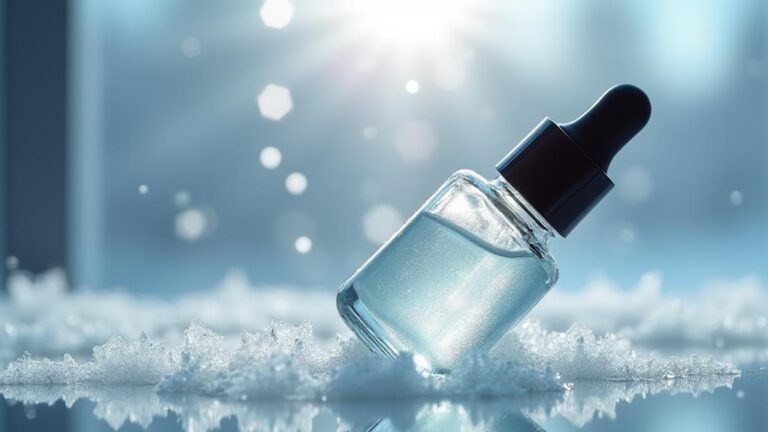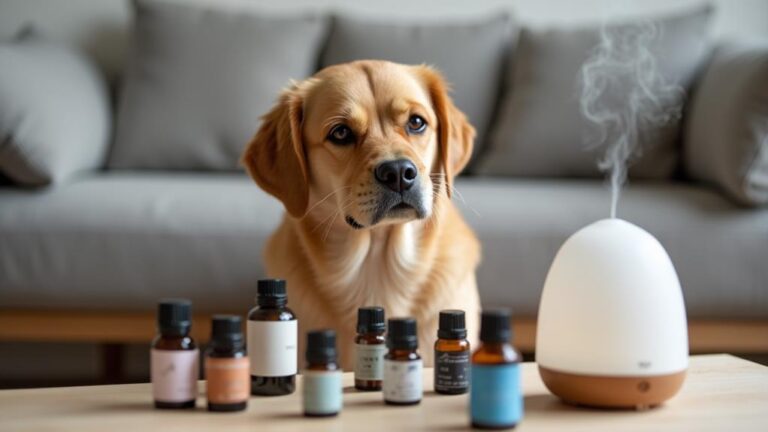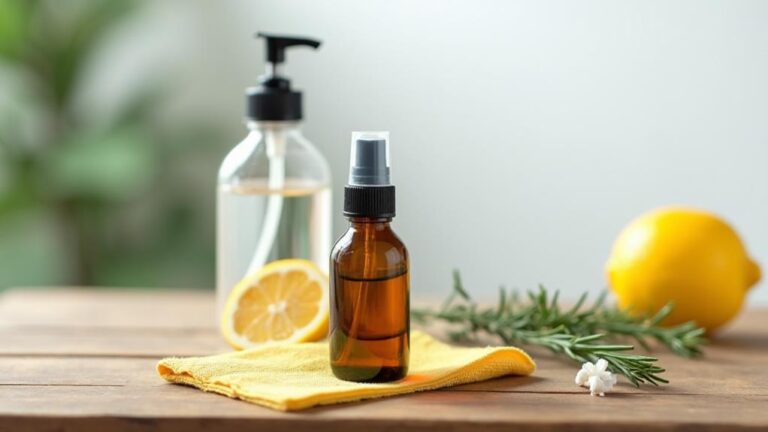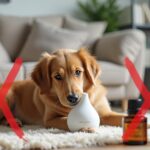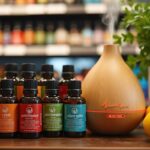As you explore the world of essential oils, you'll soon realize that the quality and characteristics of these oils greatly depend on how they're extracted from plants. There are five primary methods of essential oil production, each with its unique benefits and drawbacks. You might be wondering which method produces the highest quality oil or how the extraction process affects the oil's potency. The choice of method isn't just about personal preference; it's vital for optimizing oil production and meeting specific standards. But what exactly are these methods, and how do they impact the final product?
Key Takeaways
- Essential oil production involves various extraction methods, including steam distillation, solvent extraction, cold pressing, CO2 extraction, and more.
- Steam distillation is a common method, using high-pressure steam to release essential oils from plant materials.
- Solvent extraction involves mixing plant materials with a solvent to extract desired compounds, followed by solvent removal.
- Cold pressing is a technique primarily used for citrus peel, yielding high-quality oils with distinct characteristics.
- CO2 extraction uses pressurized carbon dioxide to release desired compounds from plant material, allowing for fine-tuning of the process.
Essential Oil Production Overview
When delving into the world of essential oil production, it's vital to grasp the fundamental principles guiding this intricate process. Essential oil history dates back thousands of years, with ancient civilizations utilizing various methods to extract oils from plants.
Today, the production process involves several techniques, each with its own advantages and limitations.
You'll find that different methods yield varying amounts of essential oils. For instance, solvent extraction tends to produce higher oil yields compared to cold pressing. However, the quality of the resulting oil may be compromised due to the potential presence of residual solvents.
In contrast, cold pressing typically yields lower oil quantities but results in a higher-quality product.
When comparing oil yields, it's essential to consider the specific plant material being used. Some plants, like lavender, are more amenable to steam distillation, while others, like citrus fruits, are better suited to cold pressing.
Understanding these differences is crucial for optimizing essential oil production and ensuring a high-quality final product. By grasping these fundamental principles, you can better navigate the complex world of essential oil production.
Steam Distillation Process
Operated by skilled technicians, steam distillation units harness the power of high-pressure steam to release essential oils from plant materials. As you employ this method, you'll use distillation equipment specifically designed to withstand the intense steam and pressure. This equipment typically includes a still, a condenser, and a collection vessel.
The steam distillation process begins with the loading of plant materials into the still. High-pressure steam is then introduced, causing the plant cells to rupture and release their essential oils.
The steam and essential oils vaporize and rise into the condenser, where they're cooled and condensed back into a liquid. You'll separate the essential oil from the water by decantation or using a separatory funnel, as the oil is typically less dense than water.
To maximize efficiency and oil quality, it's vital to master various distillation techniques.
You'll need to carefully control the steam temperature, pressure, and flow rate to prevent overheating, which can damage the essential oils. By optimizing these parameters and using specialized distillation equipment, you'll be able to produce high-quality essential oils using the steam distillation process.
Solvent Extraction Method
When you employ the solvent extraction method to produce essential oils, you'll initiate the process by carefully selecting plant materials and preparing them for extraction.
You'll then mix the prepared plant materials with a solvent, such as hexane or ethanol, to facilitate the extraction of the desired compounds.
The resulting mixture will undergo a series of steps, including filtration, separation, and solvent removal, to ultimately yield the essential oil.
Extraction Process Steps
| Step | Description |
|---|---|
| 1. Plant Material Preparation | Prepare plant material for extraction, possibly using enzyme-assisted or mechanical pressing methods. |
| 2. Solvent Addition | Add a solvent to the prepared plant material to extract the essential oil. |
| 3. Mixture Filtration | Filter the solvent-plant mixture to separate the solids from the liquid. |
| 4. Solvent Removal | Remove the solvent from the liquid, typically through distillation or evaporation. |
| 5. Oil Collection | Collect the essential oil, now separated from the solvent.
During the solvent removal step, you'll carefully monitor the process to prevent overheating or burning of the essential oil. This is vital for maintaining the oil's quality and aroma. After completing these steps, you'll have successfully extracted essential oil using the solvent extraction method.
Types of Solvents Used
The choice of solvent is critical in the solvent extraction method, as it directly affects the quality and composition of the extracted essential oil. You'll need to consider the chemical solubility of the solvent to ensure it effectively dissolves the desired plant compounds.
Common solvents used in essential oil extraction include ethanol, hexane, and acetone. Ethanol is a popular choice due to its relatively low toxicity and ability to dissolve a wide range of plant compounds. However, it may not be suitable for all plant materials, and you may need to explore solvent alternatives.
When selecting a solvent, consider factors such as its boiling point, polarity, and potential for residue formation. You'll also need to ensure the solvent is compatible with the plant material and the desired extraction conditions.
Some solvents, like hexane, are better suited for extracting non-polar compounds, while others, like acetone, are more effective for extracting polar compounds. By carefully evaluating the chemical solubility of different solvents, you can choose the best option for your specific essential oil extraction needs. This will help you achieve high-quality extracts with optimal composition and minimal contamination.
Cold Pressing Technique
When you use the cold pressing technique, you're primarily extracting essential oils from citrus peel, a process that's particularly well-suited for oils like bergamot and lemon.
You'll find that this method yields high-quality oils with distinct characteristics, thanks to the minimal heat and processing involved.
Citrus Peel Extraction
Essential Oil Production Methods
Cold Pressing Technique
Citrus Peel Extraction
Citrus peel extraction through the cold pressing technique is a widely used method to obtain high-quality essential oils from citrus fruits. When you use this method, you're able to extract the essential oils from the peel of citrus fruits like oranges, lemons, and limes. The peel composition of these fruits is vital in determining the quality of the essential oil.
| Fruit | Peel Composition | Zest Application |
|---|---|---|
| Orange | 90% Limonene, 2% Myrcene | Marmalades, flavorings |
| Lemon | 60% Limonene, 10% Beta-pinene | Cleaning products, perfumes |
| Lime | 50% Limonene, 10% Gamma-terpinene | Beverages, aromatherapy |
You'll find that the cold pressing technique is particularly effective for citrus fruits, as it helps preserve the delicate balance of compounds found in the peel. The resulting essential oil is highly concentrated and can be used in a variety of applications, from aromatherapy to flavorings. By using cold pressing, you can guarantee a high-quality essential oil that retains the unique characteristics of the citrus fruit.
Pressing Process Benefits
Cold pressing technique's ability to extract high-quality oils from citrus fruits makes it an attractive method, and its benefits are largely tied to the pressing process itself. You're likely aware that the pressing process involves mechanically squeezing the oil from the peel of the citrus fruit. This process doesn't involve heat, which helps preserve the delicate chemical compounds found in the oil.
As a result, the extracted oil retains its natural aroma and flavor, making it highly sought after by manufacturers of aromatherapy products and perfumes.
In line with current market trends, the demand for high-quality essential oils is on the rise, driven by increasing oil consumption in the cosmetic and pharmaceutical industries. The cold pressing technique is well-positioned to cater to this demand, as it allows for the production of large quantities of oil without compromising on quality.
Additionally, the pressing process is relatively straightforward and doesn't require specialized equipment, making it a cost-effective method for manufacturers. By understanding the benefits of the pressing process, you can better appreciate the value of cold pressing as a method of essential oil production.
CO2 Extraction Process
CO2 extraction, a technique gaining popularity in the production of high-quality essential oils, involves forcing pressurized carbon dioxide through plant material to release the desired compounds. When you use CO2 extraction, you'll notice that the process can be fine-tuned by adjusting the pressure and temperature of the CO2.
This allows for precise control over the extraction process and enables you to target specific compounds within the plant material.
One benefit of CO2 extraction is its cost savings. The CO2 used in the process can be recycled, reducing the overall cost of production. Additionally, CO2 extraction eliminates the need for solvents, which can be expensive and create waste.
From an ecological standpoint, CO2 extraction is considered a more sustainable option. It produces no hazardous waste and uses a non-toxic solvent that doesn't contribute to air or water pollution.
As you consider using CO2 extraction, keep in mind that the equipment required can be expensive. However, the long-term benefits and high-quality essential oils produced make it a worthwhile investment for many producers.
Essential Oil Quality Factors
When evaluating the quality of essential oils, you'll need to weigh several key factors that impact their therapeutic effectiveness, shelf life, and overall value. These factors include the botanical identity and quality of the plant material, the method of cultivation and harvesting, and the extraction process used to obtain the oil.
The presence of oil contaminants, such as pesticide residues, heavy metals, or other pollutants, can notably impact the quality of an essential oil.
You'll want to look for oils that have been tested for contaminants and meet strict safety standards. Additionally, the concentration of the essential oil, as well as its chemical composition, can affect its therapeutic effectiveness and shelf life.
A high-quality essential oil will typically have a longer shelf life due to its stable chemical composition and lack of contaminants.
Conversely, an oil with a high water content or unstable chemical composition may be more prone to oxidation, spoilage, or degradation over time.
Understanding these quality factors will help you make informed decisions when selecting essential oils for therapeutic use.
Choosing the Right Method
Quality control is another vital factor in choosing the right method.
You must evaluate the potential risks of contamination, degradation, or adulteration during the extraction process.
Consider the equipment and facilities required for each method, as well as the expertise of the production team.
Additionally, research the regulatory requirements and industry standards for essential oil production in your region.
By carefully evaluating these factors, you can select the most suitable production method for your needs and guarantee high-quality essential oils.
Your choice of method will ultimately impact the quality and safety of your final product.
Safety Precautions and Risks
When handling essential oils, you must wear protective gear, including gloves, goggles, and masks, to prevent skin contact and inhalation of toxic fumes.
Proper ventilation systems should be installed to prevent the accumulation of flammable vapors. You should also implement spill response plans and provide regular training to employees on handling emergencies.
Environmental hazards associated with essential oil production include soil and water contamination from agricultural runoff and equipment disposal.
To mitigate these risks, you should implement sustainable agricultural practices and proper waste management systems. By prioritizing worker protections and environmental safety, you can minimize the risks associated with essential oil production and guarantee a safe working environment.
Regular safety audits and inspections are vital to maintaining a safe and compliant production facility.
Essential Oil Industry Standards
The essential oil industry adheres to several key standards and regulations to guarantee consistency and safety in production.
As you navigate this industry, you'll encounter various regulatory frameworks and certification programs that guarantee high-quality products.
These standards are vital in maintaining the integrity of essential oil production.
- *ISO 9001:2015* – This international standard specifies the requirements for a quality management system, guaranteeing that essential oil manufacturers consistently produce high-quality products.
- ood Manufacturing Practices (GMPs)* – These guidelines outline the minimum requirements for manufacturing, processing, packaging, and storing essential oils, guaranteeing their safety and quality.
- nternational Organization for Standardization (ISO) certification* – This certification program verifies that essential oil manufacturers meet specific standards for quality, safety, and environmental management.
- ational Association for Holistic Aromatherapy (NAHA) certification* – This certification program recognizes essential oil manufacturers that adhere to strict guidelines for quality, safety, and sustainability.
- nvironmental and social responsibility standards* – Many essential oil manufacturers adhere to environmental and social responsibility standards, such as fair trade practices and sustainable sourcing.
Frequently Asked Questions
Can Essential Oils Be Extracted From Animal Products?
You'll find that essential oils can be extracted from animal products, such as musk from the musk deer, through musk extraction, also producing other animal-derived oils, like ambergris, castoreum, and civet oil, for use in perfumery.
What Is the Shelf Life of Essential Oils?
Your essential oils are like fine wines, susceptible to spoilage. Shelf life varies, but generally, you can expect 1-3 years, depending on oxidation rates and storage conditions like light, temperature, and container quality.
Can I Extract Essential Oils at Home Safely?
You can extract essential oils at home safely using home distillation kits or oil presses, but guarantee proper equipment, safety measures, and knowledge of extraction techniques to avoid contamination and injury.
Are Essential Oils Suitable for Babies and Pets?
When gently introducing natural remedies to little ones and furry friends, you're tiptoeing into a gentle world of aromatherapy benefits. However, you should consult a doctor or vet before using essential oils on babies or pets.
Can I Use Essential Oils Internally for Health Benefits?
When using essential oils internally, you're exposing yourself to potential risks, so it's vital to weigh benefits against hazards and follow safe internal dosing guidelines to minimize adverse reactions and guarantee therapeutic efficacy.
Conclusion
As you navigate the world of essential oil production, remember that each method is a brush stroke on the canvas of quality. Like a masterpiece, every detail counts. Steam distillation, solvent extraction, cold pressing, CO2 extraction, and hydrodistillation – each technique requires precision and care. By choosing the right method, you can create a work of art that's not only beautiful but also safe and effective.


